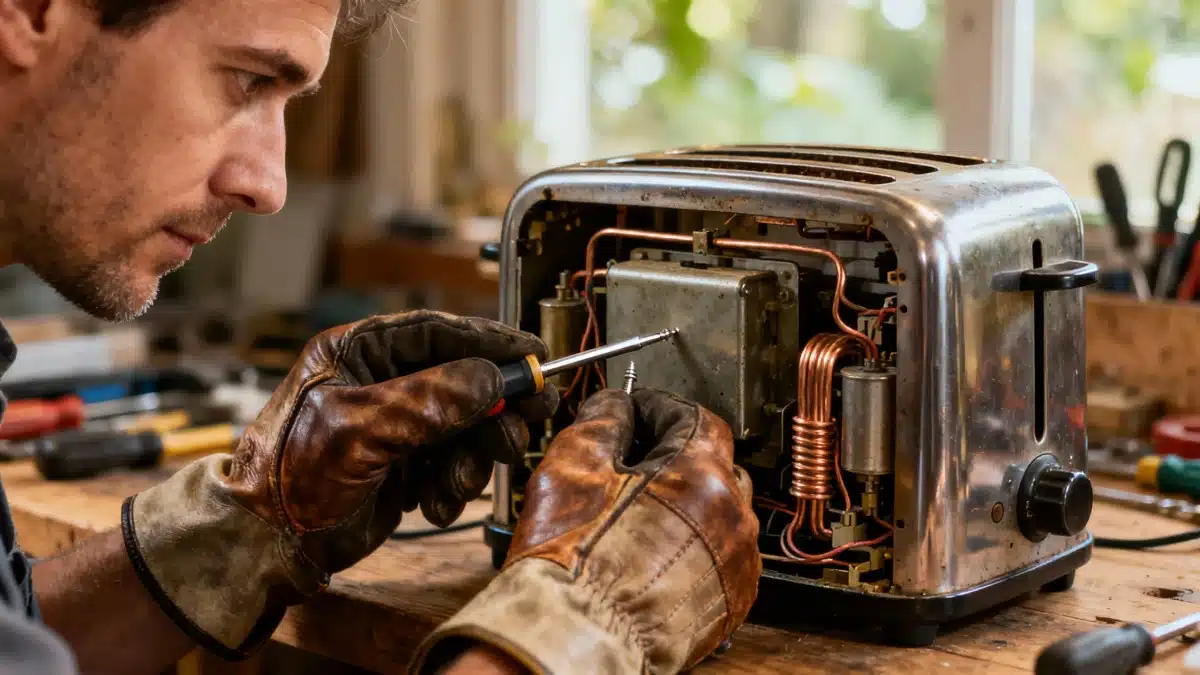Tired of your appliances waving the white flag after just a few years? You’re not alone. While buzzwords like “planned obsolescence” haunt our homes almost as much as last week’s leftovers, lasting a decade is still possible—even in a world of smart gadgets, relentless updates, and ever-tempting super-sales.
The Truth About Planned Obsolescence
It’s easy to point a finger at manufacturers, blaming them for secretly reducing appliance lifespans. That’s the textbook definition of planned obsolescence, right? The truth, though, is a bit less black-and-white and much more nuanced. Different product categories, ranges, and brands show considerable variety in durability.
Remember the sturdy machines from the 1980s? Today’s abundance of connected devices, constantly clamoring for software updates, rarely matches their robustness. Juvenile smartphones are the poster children here—slowed down by updates, needing battery replacements faster than you can say “outlet,” and often falling victim to our need for the ‘new.’ It’s no surprise the average smartphone barely makes it to its second birthday. Computers too, clock in at an average lifespan between 2.5 and 5 years.
But here’s the encouraging news: large household appliances can still hit double digits—but only if you invest wisely. Of course, the race for bargain prices has tempted some brands and retailers to offer appliances whose components are about as durable as a soap bubble. But consumer associations like UFC Que Choisir, 60 Millions de Consommateurs, and Halte à l’Obsolescence Programmée regularly publish rankings of the most reliable makers. Among these trusted brands, average lifespans have barely budged: it’s still 10 years for a washing machine and 11 years for a refrigerator. Efficiency and durability still make a winning pair, if you know how to choose.
Busting Myths: Why We Replace Working Devices
Technology marches on, sometimes leaving our habits—and our equipment—furiously trying to catch up. Take the shift from analog to digital TV, for instance. A joint study by Ademe (the ecological transition agency) and GIFAM (the appliance manufacturers’ association) found that when appliances are replaced, half are still working!
- Repair challenges: Sometimes manufacturers don’t make fixing an appliance easy.
- User temptation: The lure of new features, or a better fit for our changing needs.
What’s more, swapping out older appliances for newer, more energy-efficient ones has halved average annual household energy use for these devices. Twenty years ago, appliances accounted for 46% of home energy consumption; today, they’re down to 23%.
Pro Tips to Give Your Appliances a Fighting Chance
Customer activism starts with awareness. First step: know your needs. Picking the right appliance for your household means considering capacity and power. A fridge for a large family, a singleton, or as a backup in the basement? Not the same model! If your washing machine sees daily use, resist those entry-level temptations and opt for a higher capacity machine built for the marathon, not the sprint. Us consumers are often drawn to the fresh and flashy. Stay strong—sometimes new isn’t better.
Planning to own your major appliance for a decade? That’s a long relationship: may as well choose wisely. Ignore exceptional deals and silver-tongued sales pitches. Instead, take time to research brands and models on consumer protection sites—the very associations mentioned above publish regular comparative studies.
Raise your hand if you’ve ever read your appliance’s instruction manual before powering it up. No one? That’s what we thought. Yet manufacturers actually guarantee their product—so those precious pages are packed with usage do’s and don’ts that can keep your appliance chugging along. For washing machines:
- Mount them firmly to avoid excess vibration and premature wear.
- Empty your pockets—loose coins and scraps of paper can wreck the filter and drum.
- Don’t overstuff the drum; fill it according to specifications.
- Leave the door open between washes to let humidity escape and prevent unpleasant odors.
For dishwashers:
- Scrape off food and solids to avoid clogging the filter and drainage pump (and clean the filter regularly, by hand).
- Make sure spray arms don’t clash with poorly placed dishes—broken arms are a pain, but at least they’re easy to swap.
For refrigerators:
- Shut the door properly and check the seals regularly.
- Don’t overfill; pick a size that matches your household’s real needs.
- Place it away from the stove or oven, and save the door-opening marathons for elsewhere.
Repair, Don’t Replace—When Possible
You don’t have to be a home repair whiz to make a difference. If fixing at home scares you, call a professional or visit a « Repair Café » for smaller appliances. Repairability varies by model, but the new “repairability index” labels can now help you choose products that are easier to fix.
Conclusion: Appliances, like old friends, can stick around for years if you treat them right. From savvy shopping to straightforward maintenance, you can outsmart “planned obsolescence”—no magic required. And if you ever do feel tempted by those shiny new features, just remember: your old fridge may still be cooling better than most trends.

John is a curious mind who loves to write about diverse topics. Passionate about sharing his thoughts and perspectives, he enjoys sparking conversations and encouraging discovery. For him, every subject is an invitation to discuss and learn.






